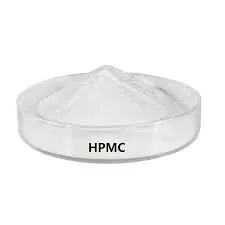
සැප්. . 16, 2024 08:28 Back to list
HPMC Viscosity
Understanding HPMC Viscosity Importance and Applications
Hydroxypropyl Methylcellulose (HPMC) is a versatile biopolymer derived from cellulose, and its viscosity plays a crucial role in various industrial and pharmaceutical applications. The viscosity of HPMC is influenced by several factors, including its molecular weight, degree of hydroxypropyl and methyl substitution, and concentration in solution. Understanding these factors is essential for optimizing HPMC use in formulations.
Understanding HPMC Viscosity Importance and Applications
In food applications, HPMC acts as a thickening agent, emulsifier, and stabilizer. The viscosity of HPMC solutions is critical for achieving the desired texture and mouthfeel in food products. For example, in sauces and dressings, the appropriate viscosity ensures a smooth consistency and optimal spreadability. Additionally, HPMC is used in gluten-free baking to improve texture and moisture retention. Understanding how to manipulate the viscosity of HPMC can significantly enhance the quality and performance of these food products.
hpmc viscosity

Moreover, HPMC's viscosity is crucial in the construction industry, where it is commonly used in cement-based materials. When added to mortars and plasters, HPMC improves workability, adhesion, and water retention. These properties are essential for ensuring the durability and strength of construction materials. By controlling the viscosity of HPMC, manufacturers can achieve a balance between ease of application and the final performance of the building materials.
The quality control of HPMC viscosity is paramount. Manufacturers utilize various viscometric methods to assess and ensure consistent viscosity levels in their products. Instruments such as Brookfield viscometers provide reliable measurements that help in maintaining the desired properties of HPMC throughout its production and application processes.
In summary, HPMC viscosity is a key attribute that impacts its functionality across multiple sectors, including pharmaceuticals, food, and construction. By understanding the factors that influence viscosity and leveraging this knowledge, manufacturers can enhance product performance and meet specific application requirements. Continuous research and development in this field will likely yield new grades of HPMC with tailored viscosities, further expanding its utility and effectiveness in various applications. Therefore, mastering HPMC viscosity not only optimizes existing products but also paves the way for innovation and improved functionalities in future formulations.
-
The Widespread Application of Redispersible Powder in Construction and Building Materials
NewsMay.16,2025
-
The Widespread Application of Hpmc in the Detergent Industry
NewsMay.16,2025
-
The Main Applications of Hydroxyethyl Cellulose in Paints and Coatings
NewsMay.16,2025
-
Mortar Bonding Agent: the Key to Enhancing the Adhesion Between New and Old Mortar Layers and Between Mortar and Different Substrates
NewsMay.16,2025
-
HPMC: Application as a thickener and excipient
NewsMay.16,2025
-
Hec Cellulose Cellulose: Multi functional dispersants and high-efficiency thickeners
NewsMay.16,2025







